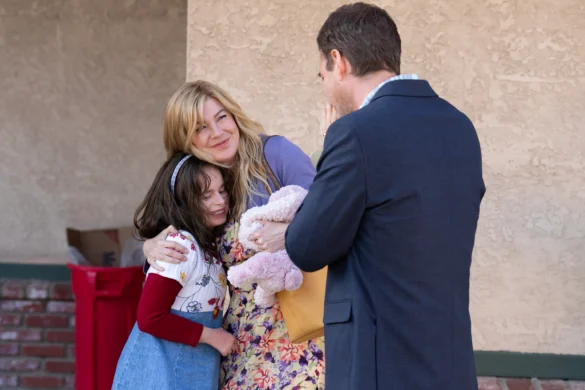True
Hulu’s new crime drama The Good American Family has captivated audiences with its chilling depiction of a seemingly innocent adoption turned into a real-life nightmare. The series, inspired by actual events, tells the story of Kristine and Michael Barnett, a Midwestern couple who adopted a girl named Natalia Grace, only to later accuse her of being an adult masquerading as a child. The shocking twists and legal battles surrounding this case have raised numerous questions: Who is Natalia Grace? Was she really a child? And what led to the Barnetts’ alarming suspicions?
Who Is Natalia Grace?
Natalia Grace, a Ukrainian-born girl diagnosed with a rare form of dwarfism called spondyloepiphyseal dysplasia congenita (SEDc), was adopted by an Indiana couple, Kristine and Michael Barnett, in 2010. At the time of adoption, she was believed to be around six or seven years old. However, the Barnetts soon began questioning her age based on physical and behavioral observations.
According to the couple, they noticed signs that led them to believe Natalia was much older than her stated age. Kristine Barnett recalled being shocked upon seeing that Natalia had full pubic hair and allegedly exhibited behaviors inconsistent with that of a young child, including claims that she had a menstrual cycle. These unsettling discoveries led them to believe they had unknowingly adopted an adult woman posing as a child.
Allegations and Counterclaims
As the Barnetts became increasingly convinced that Natalia was not who she claimed to be, their relationship deteriorated. They accused her of attempting to harm their family, citing incidents such as hiding knives, making violent threats, and even attempting to poison Kristine’s coffee with cleaning fluid. These claims formed the basis of their legal battle, which played out in both tabloids and the courtroom.
However, Natalia Grace has vehemently denied these accusations, stating that she was indeed a child at the time of adoption and that the Barnetts fabricated these stories to justify their decision to abandon her. She claimed that Kristine physically abused her, including hitting her with a belt and pepper-spraying her eyes. According to Natalia, the Barnetts forced her to say she was older and coached her to claim she was dangerous.
Legal Proceedings and Age Controversy
One of the most baffling aspects of the case is the legal change of Natalia’s age. In 2012, the Barnetts successfully petitioned the Marion County Probate Court to change her birth year from 2003 to 1989, legally making her a 22-year-old adult. This decision allowed them to place Natalia in an apartment and move to Canada without facing child abandonment charges.
Natalia, however, struggled to live alone. According to her, the apartment was not fully accessible for someone with her condition, and she had no way to call for help. Eventually, she was taken in by another family, the Manses, who supported her claim that she was indeed a child when abandoned.
The Good American Family: Fact vs. Fiction
The Hulu series The Good American Family dramatizes these events, offering multiple perspectives to explore the conflicting accounts. Starring Ellen Pompeo and Mark Duplass as Kristine and Michael Barnett, the show delves into the psychological and legal battles surrounding the case. It raises questions about perception, manipulation, and the complexities of truth in high-profile legal disputes.
While the show takes creative liberties, it stays true to the core controversies, depicting the Barnetts’ suspicions, Natalia’s struggles, and the ensuing courtroom battles. As with any dramatization, viewers should be mindful of the differences between reality and fiction.
Where Are They Now?
After years of legal battles, the Barnetts faced charges of neglecting a dependent. Michael Barnett was acquitted in 2022, and all charges against Kristine were dismissed in 2023. Meanwhile, Natalia found stability with a new adoptive family, the DePauls, a New York couple who also have dwarfism. Recent DNA testing has supported Natalia’s claims, determining she was approximately nine years old at the time of her adoption.
Despite the legal resolutions, the case remains a subject of public fascination. The conflicting narratives continue to fuel debates, making The Good American Family a compelling yet unsettling watch.
Conclusion
The story behind The Good American Family is as disturbing as it is perplexing. The conflicting allegations, legal twists, and ongoing debates leave audiences questioning what truly happened. While the Barnetts maintain their suspicions, Natalia Grace’s side of the story, supported by DNA evidence, challenges their claims. Regardless of where the truth lies, this case serves as a cautionary tale about the complexities of adoption, legal identity, and public perception.

